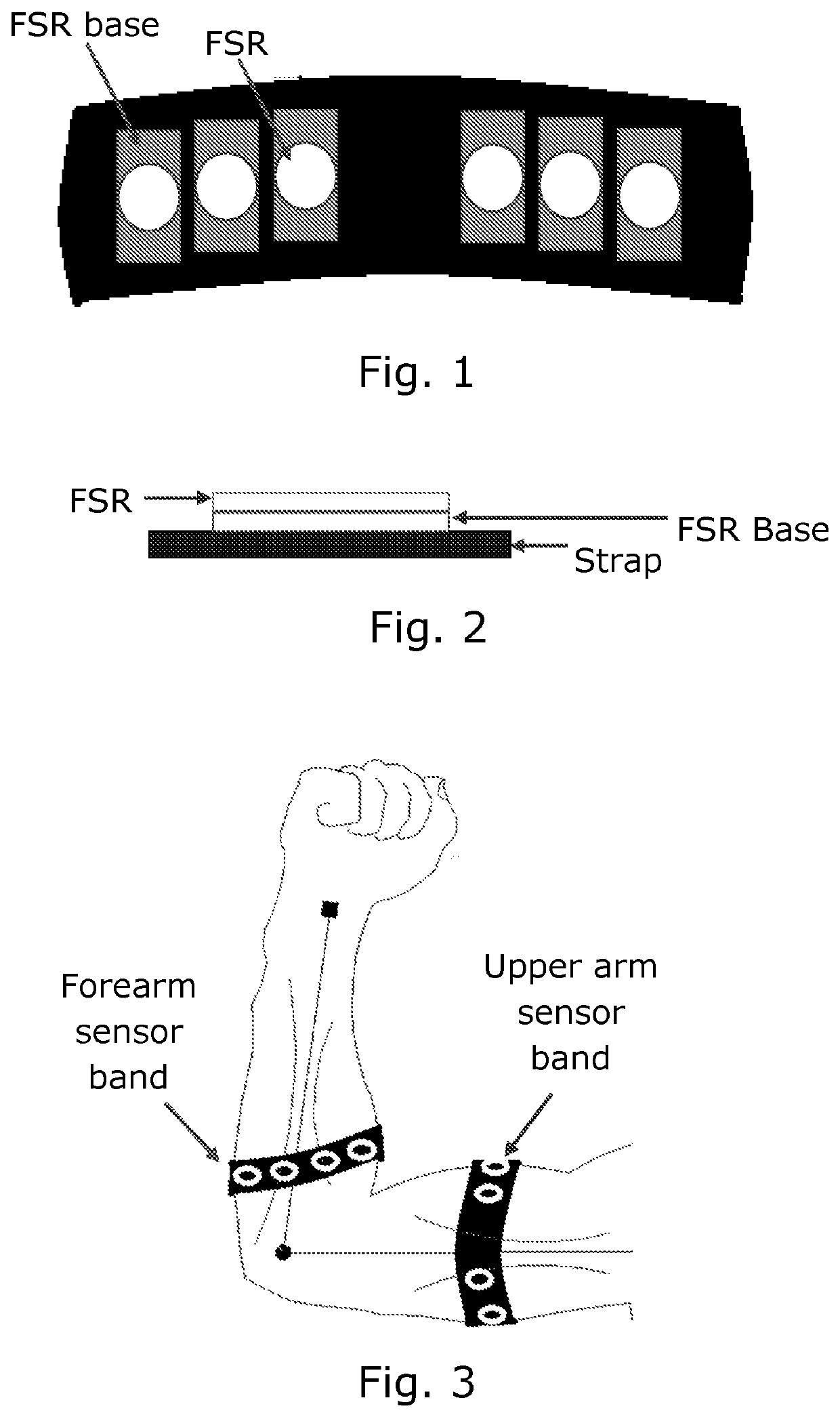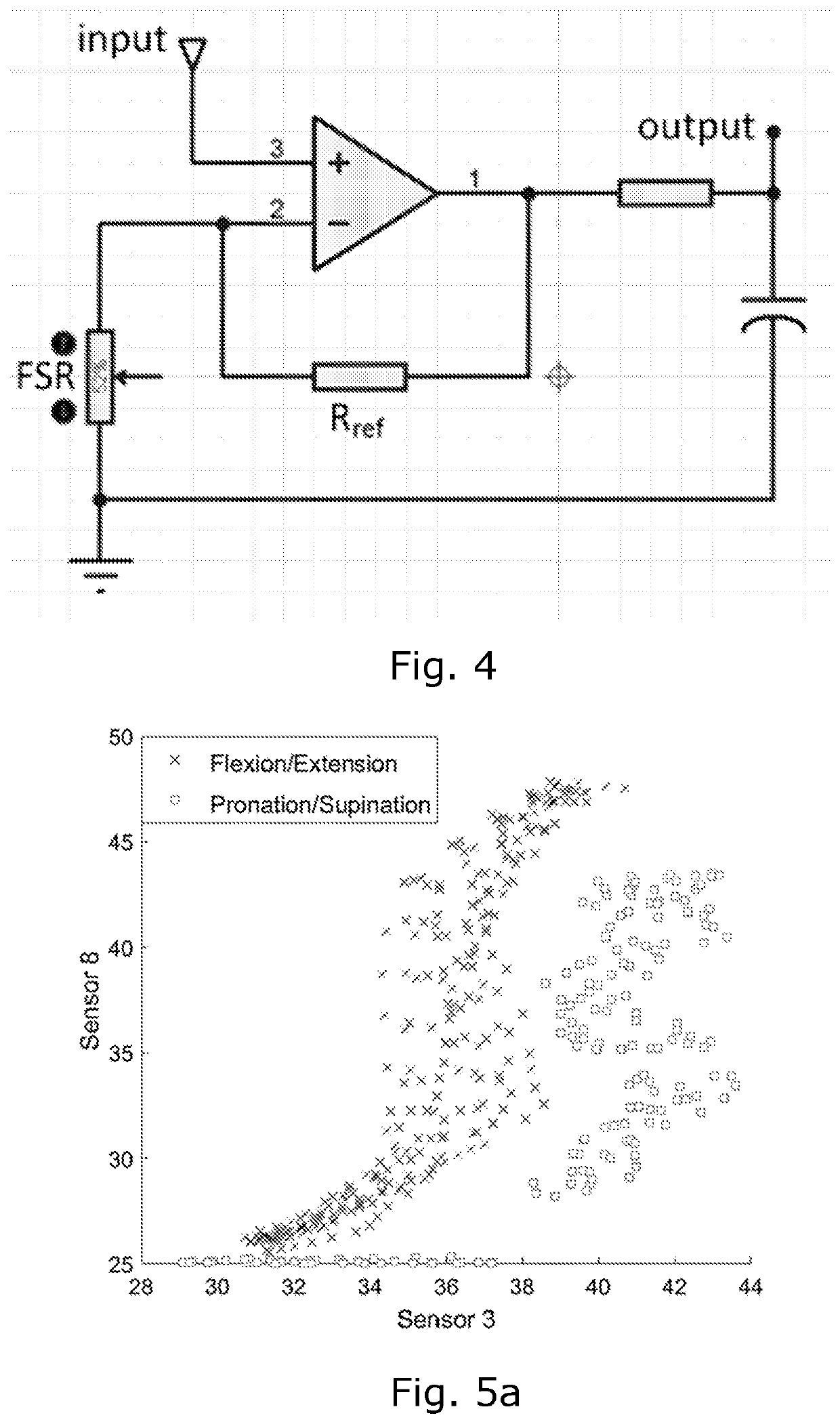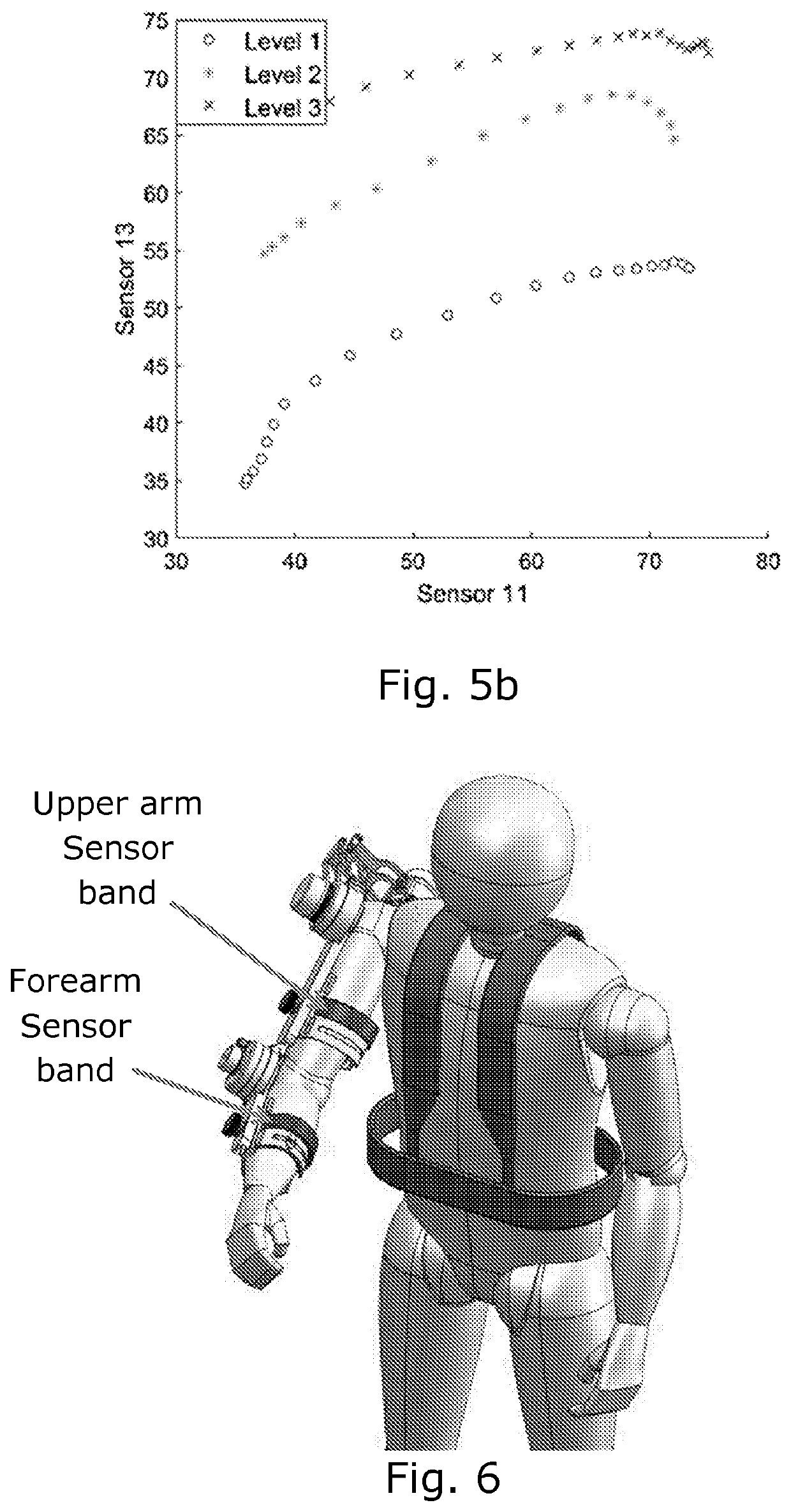A human intention detection system for motion assistance
a motion assistance and detection system technology, applied in the field of human intention detection (hidden) systems, can solve the problems of inconvenient use, inconvenient and uncomfortable use, and inability to detect motion, and achieve the effects of convenient and easy use, high accuracy, and compact design
- Summary
- Abstract
- Description
- Claims
- Application Information
AI Technical Summary
Benefits of technology
Problems solved by technology
Method used
Image
Examples
Embodiment Construction
[0058]The proposed HID system to detect the human intention is comprised of the following modules:[0059]1) Sensor Bands[0060]2) Electronics[0061]3) Machine learning algorithm
[0062]1) Sensor bands are used to read the muscle activity during different movement and muscle force or effort. Each is comprised of a flexible strap with an array of N (5≤N≤10) force sensing resistors (FSRs, e.g. Interlink 402), as illustrated in FIGS. 1 and 2, embedded inside them. FSRs are capable of measuring the force change due to muscle contraction and relaxation. They have been placed in such an order, so that the activity of different muscles groups can be detected. The choice of flexible strap is made, to ensure the comfortability and fixed position on the arm. A small base has been placed between the strap and the FSR to make sure that full surface of FSR gets in contact with the skin.
[0063]The sensor bands can be mounted on arm in different ways:[0064]a) One on upper arm and one on forearm (FIG. 3) ...
PUM
 Login to View More
Login to View More Abstract
Description
Claims
Application Information
 Login to View More
Login to View More - R&D
- Intellectual Property
- Life Sciences
- Materials
- Tech Scout
- Unparalleled Data Quality
- Higher Quality Content
- 60% Fewer Hallucinations
Browse by: Latest US Patents, China's latest patents, Technical Efficacy Thesaurus, Application Domain, Technology Topic, Popular Technical Reports.
© 2025 PatSnap. All rights reserved.Legal|Privacy policy|Modern Slavery Act Transparency Statement|Sitemap|About US| Contact US: help@patsnap.com



